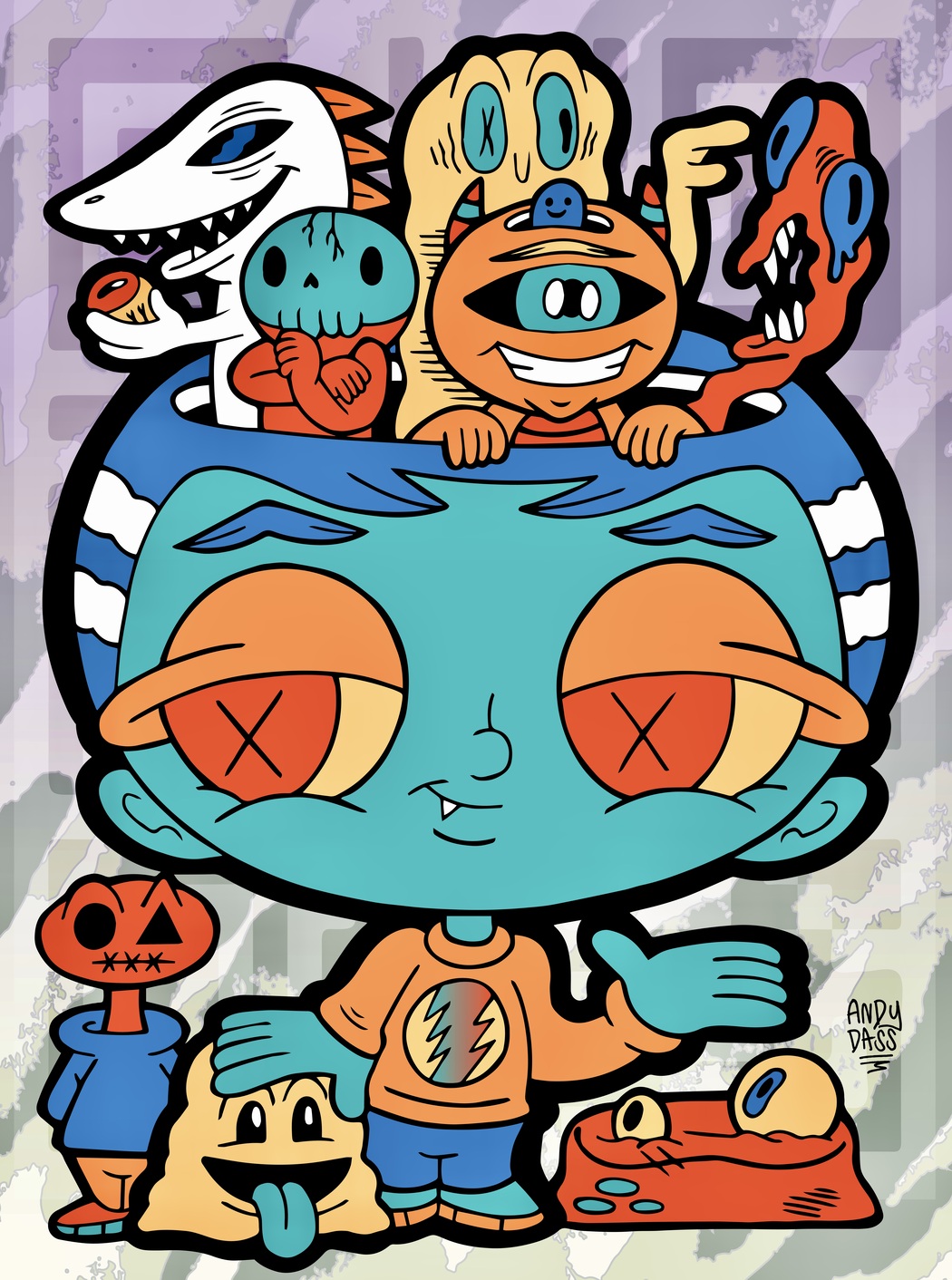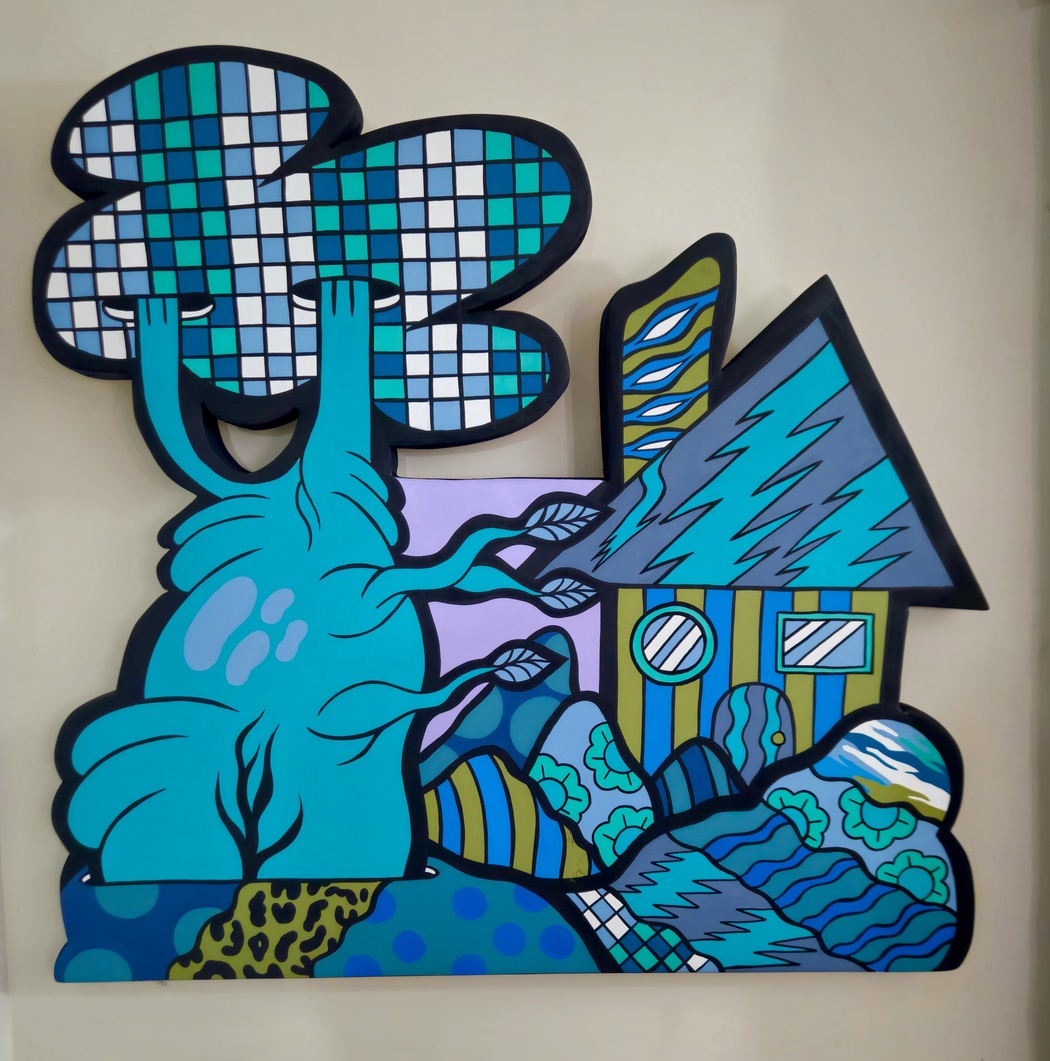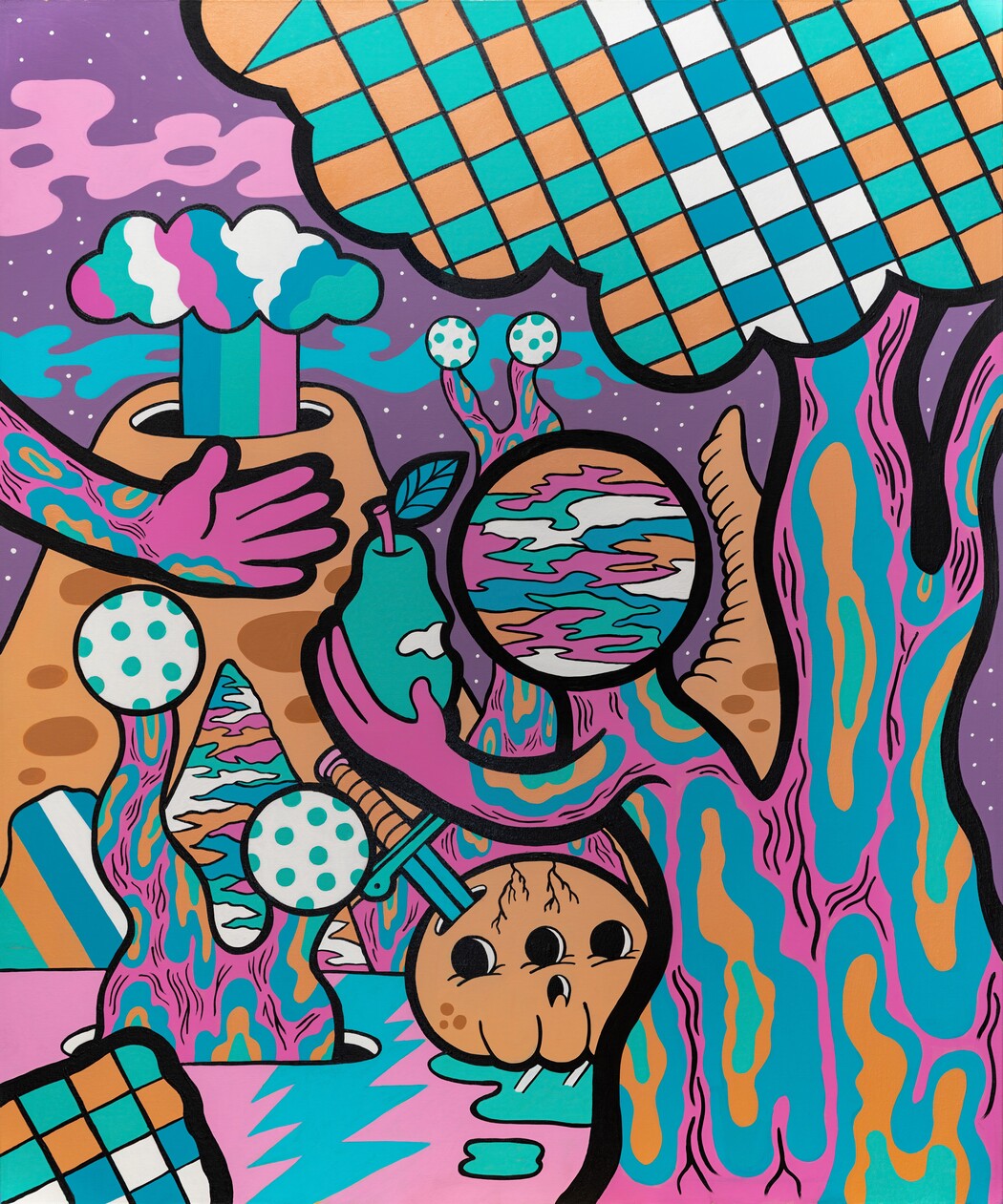Andy Dass
Year of birth: 1981.
Where do you live: Montreal Canada.
Describe your art in three words: whimsical, joyful, dreamlike.
Your discipline: visual artist.
Website | Instagram
Can you describe the inspiration behind your planetary paintings? How do they reflect the concept of an “active mind”?
The concept for my planetary paintings came to me one day when I was overthinking, as usual. I thought to myself, how can I translate this idea of overthinking onto a canvas? The phrase “in his own world” came to mind, and I started painting literal planets as symbolism. At the time of inception, I was mostly creating figurative character-based works, so the planetary paintings became a new challenge for me. The compositions are always bold and jarring. When we overthink, we tend to receive thoughts in waves, or we dwell on the same thing repeatedly. I wanted the compositions in these paintings to reflect the idea of chaos in our minds. This is not to say that these paintings are only about “being in your own world,” but this concept serves as inspiration as this style continues to evolve, and viewers alike have their own interpretations.
Your work often evokes nostalgia. What specific childhood memories or moments influence your art the most?
I grew up in the eighties and nineties, and much like anyone born in their respective era, I have fond memories of the times I experienced. To this day, everything from pop culture to fashion and films continues to draw inspiration from the eighties and nineties. I guess my artwork is somewhat a byproduct of these eras as well, but done with a modern painting style. I like to say, “Modern nostalgia,” if that makes sense. My fondest memories are the simplest, and these memories inspire my art. I recall spending time as a child, playing all day in the park with friends, shooting hoops on basketball courts, watching Saturday morning cartoons, and buying exclusive fashion garments from barbershops, then coming home from school to enjoy a home-cooked meal from my mother.
 Andy Dass | Befriending Demonz
Andy Dass | Befriending Demonz
How do elements from 90s pop culture, music, and Saturday morning cartoons shape your visual style?
The 90s were all about bold colors. Neon, purple, and turquoise can be seen everywhere in 90s artwork, from album covers to animation to retro-style posters. I like to draw inspiration from these colors and influences in my work. Fantasy, surrealism, and a sort of childlike naivety and playfulness are used to convey feelings of nostalgia. I like the idea of making paintings look like illustrations, my goal is to evoke emotions and feelings from a time when life was simpler and carefree.
Can you explain how you balance humor, satire, and thought-provoking themes in your artworks?
Life is just more enjoyable when we can all laugh together. I try to incorporate an element of silliness into my work, but on closer inspection, you can delve a little deeper. I never want to take myself too seriously; I think there is enough of that in the art world already. For instance, the trees in my surreal landscapes have folds of fat on them, which can be humorous or disturbing. This is up to the viewer to decide. Some of my illustrative work has touched on mental illness, addressing coping with depressive thoughts and anxiety—stuff we all go through at some point.
 Andy Dass | Gothside
Andy Dass | Gothside
Your paintings transport viewers to whimsical worlds. How do you approach creating these imaginative universes?
We all have those days when we just want to be somewhere else. I try to let my imagination run wild and think to myself: if I could create my own paradise or my own place to escape to, what would that look like? What can I create that would make someone want to envision themselves visiting there? For my landscapes, I always start with sketches and choose the one I am feeling at the moment. As for my planetary abstracts, these are sketched directly onto the canvas with no prior sketch, and I figure it out. This is to have different approaches to keep things interesting and challenging. I also pride myself on my color mixing, coming up with unique palettes for each painting and always mixing most of my colors before I begin to paint, rather than using them directly from the bottle.
Could you elaborate on the symbolic significance of the trees, houses, and patterns in your surreal landscapes?
Trees symbolize life. They play a role in providing us oxygen, bearing fruit, and beautifying our world. My trees are somewhat deformed and almost human-like in their appearance; they are fat and imperfect but beautiful. We are all flawed, yet we do our best every day, and I guess my surreal trees somewhat represent this idea of perseverance. The houses represent the old homes we grew up in, our grandmother’s house, or perhaps a close relative, a neighbor, upbringing, and our fondest memories locked inside these houses. Patterns are everywhere in our world, from fashion garments to architecture; even insects and animals adorn intricate patterns. Still, I guess the patterns in my landscapes resemble those on quilts—comforting.
 Andy Dass | The Offering | 2021
Andy Dass | The Offering | 2021
What role does collaboration play in your artistic journey, such as mural painting or working with Fashion Fights Cancer?
I began my artistic journey by collaborating with a mural collective, which essentially gave me the courage to paint in front of others and learn how to work with fellow artists. I met artists from all walks of life within the graffiti, street art, and contemporary art scenes and learned a great deal from them. Collaboration is a fantastic way to not only acquire new skills but also to see art from different perspectives beyond your own creative biases. I always strive to give back when I can; Fashion Fights Cancer has been an excellent initiative to work with, as it collaborates with both designers and artists alike. I am happy to be a part of their family, helping those in need.


Leave a Reply